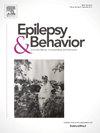调查接受左乙拉西坦治疗的癫痫患者的自然流产和死胎不良事件:药物警戒研究
IF 2.3
3区 医学
Q2 BEHAVIORAL SCIENCES
引用次数: 0
摘要
背景由于左乙拉西坦的致畸风险较低,妊娠期处方左乙拉西坦已变得越来越普遍。方法这项回顾性药物警戒研究使用不相称性分析来检测FDA不良事件报告系统FAERS中报告的左乙拉西坦相关不良反应信号。采用报告几率比(ROR)和信息成分指数(IC)进行比例失调分析,并进行变化点分析以确定相关不良事件报告频率的变化。敏感性分析包括按适应症、治疗方案和报告地区进行亚组分析。结果共分析了2870例使用常用抗癫痫药物的自然流产和死胎病例。其中,65.5%的病例以癫痫为适应症。在整个数据集中,我们观察到 6 种 ASM(左乙拉西坦、卡马西平、拉莫三嗪、奥卡西平、托吡酯、丙戊酸)的自然流产比例失调信号,以及 4 种 ASM(左乙拉西坦、卡马西平、拉莫三嗪、奥卡西平)的死胎比例失调信号。在癫痫人群中,发现左乙拉西坦有死胎(ROR0.25=4.60;IC0.25=1.30)和自然流产(ROR0.25=3.98;IC0.25=1.20)的不相称性信号。根据对其进行的时间评估,这些比例失调信号在过去几年中一直很稳定。结论通过使用经过验证的药物警戒方法,我们发现了与左乙拉西坦相关的自发性流产和死胎的重大比例失调信号。其中,自然流产信号出现在 2011 年之后,死胎信号出现在 2014 年之后,这可能与近年来妊娠期左乙拉西坦处方量增加有关。自然流产和死胎不良事件与左乙拉西坦的关联以及混淆这种关联的潜在偏倚值得进一步研究。本文章由计算机程序翻译,如有差异,请以英文原文为准。
Investigation of spontaneous abortion and stillbirth adverse events in epilepsy patients treated with levetiracetam: A pharmacovigilance study
Background
The prescription of levetiracetam during pregnancy has become more common due to its lower teratogenic risk profile. However, due to a lack of data about its association with stillbirth and spontaneous abortion, worries remain.
Objective
To investigate information on any possible association of spontaneous abortion and stillbirth adverse events with levetiracetam in women with epilepsy.
Methods
This retrospective pharmacovigilance study used disproportionality analysis to detect signals of adverse reaction of interest reported with Levetiracetam in FAERS, the FDA Adverse Event Reporting System. The ratio of reporting odds (ROR) and information component (IC) indices were used to undertake disproportionality analyses, and change point analyses were carried out to identify variations in the frequency of reporting of relevant adverse events. Sensitivity analyses included subgroup analyses by indication, treatment regimen, and reporting region.
Results
Overall, 2870 cases of spontaneous abortion and stillbirth with commonly used antiseizure medications were analyzed. A total of 65.5 % of these cases had epilepsy as the indication. In the entire dataset, we observed disproportionality signals of spontaneous abortion for 6 ASMs (levetiracetam, carbamazepine, lamotrigine, oxcarbazepine, topiramate, valproic acid) and disproportionality signals of stillbirth for 4 ASMs (levetiracetam, carbamazepine, lamotrigine, oxcarbazepine). In the epileptic population, disproportionality signals for stillbirth (ROR0.25 = 4.60; IC0.25 = 1.30) and spontaneous abortion (ROR0.25 = 3.98; IC0.25 = 1.20) in levetiracetam was identified. These disproportionality signals have been consistently robust over the past years, according to a temporal assessment of them. Sensitivity studies proved how reliable the findings were.
Conclusion
Using validated pharmacovigilance methods, we found significant disproportional signals for spontaneous abortion and stillbirth associated with levetiracetam. Of these, the signals for spontaneous abortion were observed after 2011 and for stillbirth after 2014, which may be related to the rise in levetiracetam prescriptions during pregnancy in recent years. The association of spontaneous abortion and stillbirth adverse events with levetiracetam and potential biases confounding this association merit further investigation.
求助全文
通过发布文献求助,成功后即可免费获取论文全文。
去求助
来源期刊

Epilepsy & Behavior
医学-行为科学
CiteScore
5.40
自引率
15.40%
发文量
385
审稿时长
43 days
期刊介绍:
Epilepsy & Behavior is the fastest-growing international journal uniquely devoted to the rapid dissemination of the most current information available on the behavioral aspects of seizures and epilepsy.
Epilepsy & Behavior presents original peer-reviewed articles based on laboratory and clinical research. Topics are drawn from a variety of fields, including clinical neurology, neurosurgery, neuropsychiatry, neuropsychology, neurophysiology, neuropharmacology, and neuroimaging.
From September 2012 Epilepsy & Behavior stopped accepting Case Reports for publication in the journal. From this date authors who submit to Epilepsy & Behavior will be offered a transfer or asked to resubmit their Case Reports to its new sister journal, Epilepsy & Behavior Case Reports.
 求助内容:
求助内容: 应助结果提醒方式:
应助结果提醒方式:


